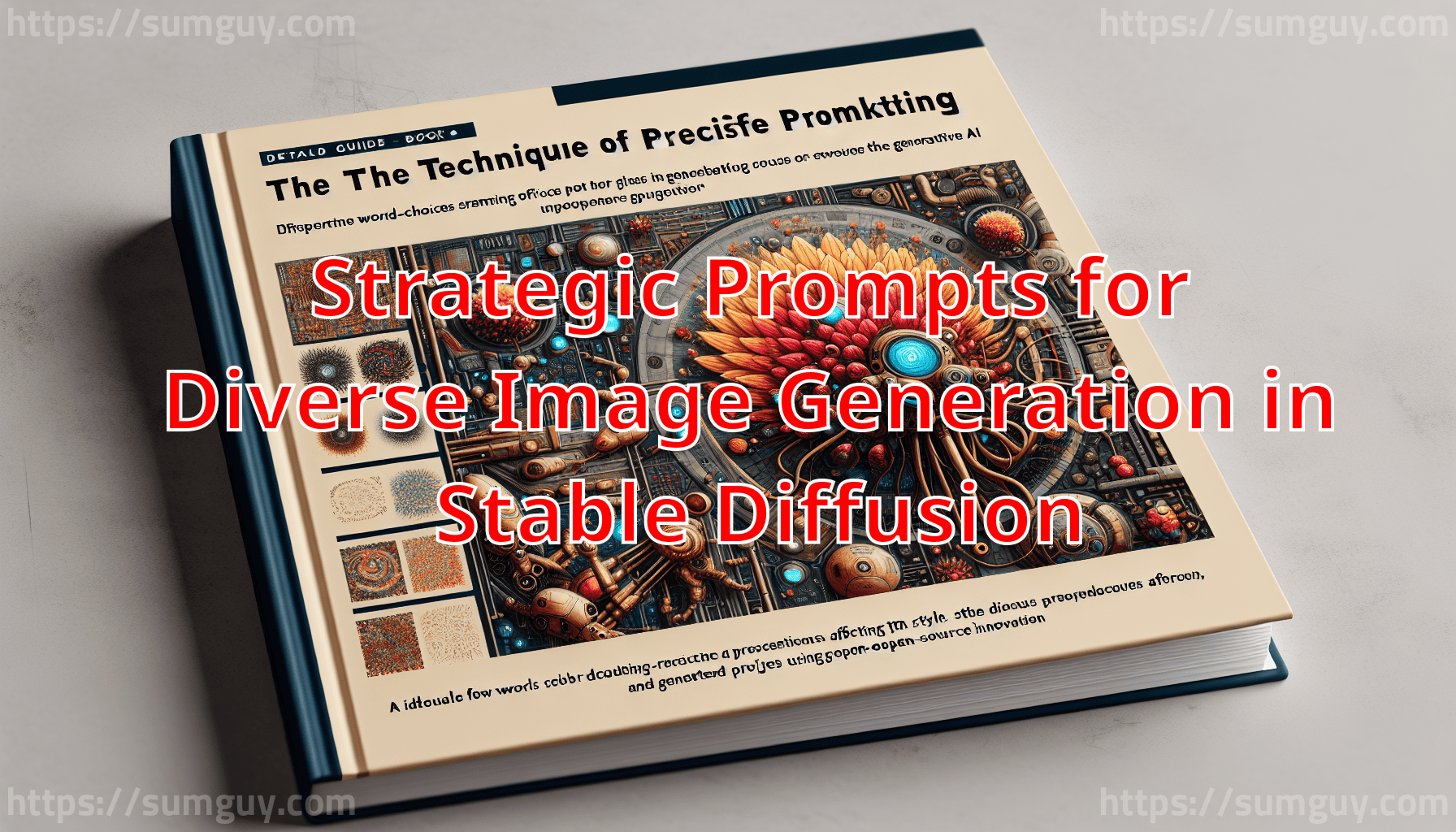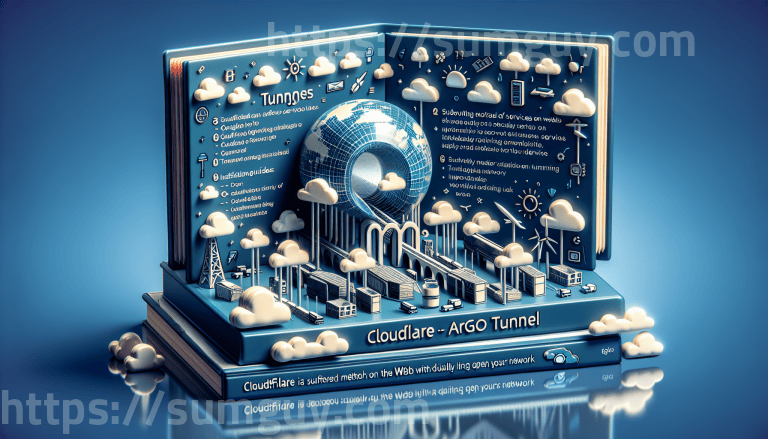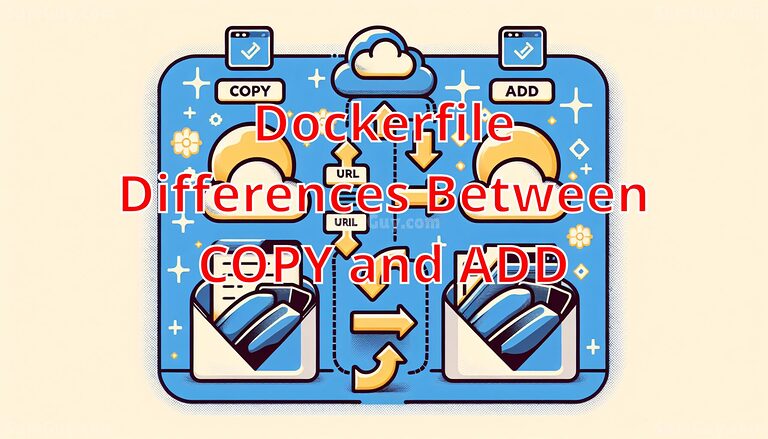Prompts for Image Generation in Stable Diffusion
Stable Diffusion is a deep learning, text-to-image model designed to generate detailed images from textual descriptions, offering remarkable empowerment to graphic designers, artists, and even system administrators who need to visualize concepts or ideas.
In this comprehensive guide, I will delve into the mechanics of prompting Stable Diffusion effectively to get varied and specific image types. We’ll explore different use cases, prompt examples, the nuances of crafting prompts, and understand the subtle differences in the outputs depending on how you frame your requests.
Understanding Stable Diffusion
Stable Diffusion operates based on a model trained with vast amounts of image and text data, allowing it to interpret textual input and produce visually corresponding outputs. At the heart of its capability is the prompt; the text you input heavily influences the characteristics, style, and accuracy of the generated image.
Crafting Effective Prompts
The secret to leveraging Stable Diffusion successfully lies in prompt engineering—the art of crafting prompts that effectively communicate your vision to the model. Here are several components to consider:
Specificity
The more specific your prompt, the more likely the model will generate an image that meets your expectations. General prompts yield general images, while detailed descriptions produce more tailored results.
Example:
- General Prompt: “A forest scene”
- Specific Prompt: “A sunlit forest with dense, ancient oak trees and a carpet of bluebells under a clear early spring sky”
Style Specifications
Including an artistic style in the prompt can influence the mood and texture of the output.
Example:
- “A portrait of a young woman, Van Gogh style”
Mood and Atmosphere
The inclusion of mood or atmospheric elements can drastically alter the emotion conveyed by the image.
Example:
- “An abandoned Victorian house at dusk, emphasized eerie and mysterious atmosphere”
Use Cases for System Administrators
Visual Documentation
Create visual aids or infographics to explain complex systems or workflows.
Prompt Example:
- “Infographic of a Linux server architecture, with labeled components and data flow, in a clean, modern style”
Creative Problem Solving
Visualizing system solutions or architectures before implementation.
Prompt Example:
- “A high-tech digital dashboard for monitoring network security, with futuristic style elements”
Learning and Presentations
Generate illustrations for training materials or presentations to make technical content more accessible.
Prompt Example:
- “Cartoon diagram of SSH handshake process, with characters representing the client and server”
Experimenting with Variations
To understand the flexibility and range of Stable Diffusion, let’s look at some variations:
Concept: “Cyberpunk Cityscape”
- Prompt A: “A neon-lit cyberpunk cityscape at night, bustling with life”
- Prompt B: “A rainy cyberpunk cityscape with reflective streets and gloomy ambiance”
Concept: “Futuristic Car”
- Prompt A: “Sleek futuristic car speeding on a highway, with a sunset in the background, in a realistic style”
- Prompt B: “A rugged futuristic off-road vehicle, parked in a harsh desert environment, in a concept art style”
Understanding the Output
Notice how the specificity and mood alter the output drastically. While Prompt A for both concepts emphasizes vibrancy and life, Prompt B introduces a moodier, atmospheric dimension.
Let’s dive deeper into the ways we can prompt Stable Diffusion to create various styles and outcomes. By refining our prompts with clear styles, subject matters, and moods, we can significantly control the aesthetic and functional qualities of the generated images. Here are more fascinating examples illustrating how tweaks in the wording of your prompt can yield strikingly different results.
Theme: Vintage Sci-Fi Poster
Prompt A: “A vintage sci-fi poster depicting a rocket launch, with vibrant colors and 1950s American retro-futurism style.”
- Expected Outcome: You can expect bold colors, perhaps some art deco influences, and imagery that evokes the early days of space exploration excitement.
Prompt B: “A monochrome 1950s sci-fi art featuring a mysterious alien landscape, in the style of old pulp fiction book covers.”
- Expected Outcome: This should generate an image with high contrast, simplified forms, and a sense of eerie, unexplored worlds, typical of mid-century sci-fi fantasies.
Theme: Abstract Expressionism
Prompt A: “A large canvas filled with wild splashes of vibrant colors, reminiscent of a Jackson Pollock painting.”
- Expected Outcome: Look forward to seeing a chaotic interplay of colors and forms, capturing the dynamic and energetic technique associated with Pollock.
Prompt B: “A serene blue and white abstract painting, evoking the tranquil mood of a Mark Rothko canvas.”
- Expected Outcome: This prompt would typically lead to a creation of soft, blurred rectangles in calming shades, promoting a meditative visual experience.
Theme: Environmental Concept Art
Prompt A: “Concept art of a lush, ancient jungle with towering trees and hidden ruins, sunlight filtering through thick foliage, in the style of a high fantasy game.”
–
Expected Outcome: The image should express a vibrant, detailed, and mysterious setting, which could serve as a backdrop for stories or games.
Prompt.PRINT B: “A dystopian wasteland with scattered remnants of civilization, heavy gray skies, and a hint of steampunk, envisioned as a game setting.”
- Expected Outcome: The generated image would likely feature a bleak landscape, using muted colors and incorporating mechanical elements, creating a somber and intriguing environment.
Theme: Renaissance Painting
Prompt A: “A detailed Renaissance portrait of a noble lady, wearing an elaborate dress and a subtle smile, set against a dark, textured background.”
- Expected Outcome: This will bring forth an image reminiscent of classical paintings, focusing on the intricate fabric textures, natural skin tones, and an overall sense of depth.
Prompt B: “A busy market scene in a Renaissance town, filled with various characters and vibrant activity, painted in the style of Pieter Bruegel.”
- Expected Outcome: Expect a composition bustling with life, where each character tells a story, styled in the vibrant yet earthy palette typical of Bruegel’s works.
Theme: Cybernetic Organisms
Prompt A: “A detailed close-up of a cybernetic organism, integrating organic plant textures with metal and circuitry, glowing with bioluminescence.”
- Expected Outcome: An intricate image showcasing a blend of technology and nature, possibly illuminating with gentle, eerie light against a darker background.
Prompt B: “An action scene of a cybernetic wolf in a chase, its body sleek with advanced robotics, set in a futuristic urban environment.”
- Expected Outcome: Dynamic imagery featuring mechanical precision and futuristic elements, portraying the speed and intensity of the scene.
Theme: Art Nouveau Poster
Prompt A: “An Art Nouveau poster featuring a woman with flowing hair adorned with flowers, framed by intricate, organic lines and a muted color palette.”
- Expected Outcome: A stylistic, harmonious image with strong curves, natural forms, and a soft coloration that is typical of the Art Nouveau style.
Prompt B: “A promotional travel poster in Art Nouveau style, depicting the scenic beauty of the Swiss Alps with elegant typography and floral borders.”
- Expected Outcome: This would generate an aesthetically pleasing layout that combines the natural allure of the Alps with decorative elements characteristic of Art Nouveau.
Theme: Deep Sea Exploration
Prompt A: “A mystical underwater scene showing a diver discovering an ancient sunken temple, surrounded by curious bioluminescent creatures.”
- Expected Outcome: A captivating, surreal image that draws on the mystery and enchantment of underwater worlds, highlighted by the glowing life forms.
Prompt B: “An educational poster illustrating the biodiversity of the deep sea ecosystem, featuring various species of fish and coral in vibrant colors.”
- Expected Outcome: This prompt would yield an informative, colorful depiction of marine life, ideal for educational purposes or scientific presentations.
Theme: Steampunk Contraptions
Prompt A: “A detailed illustration of a steampunk airship, equipped with brass gears and steam engines, floating above a cloud-covered city.”
- Expected Outcome: Expect a visually rich, mechanically intricate design that captures the essence of steampunk aesthetics with a sense of adventure.
Prompt B: “A scene depicting a Victorian-era laboratory bustling with inventors working on steampunk gadgets, full of brass instruments and whirring machines.”
- Expected Outcome: A busy, detailed interior filled with historical and fantastical elements, showcasing human interaction with complex machinery.
Theme: Post-Apocalyptic Survivor
Prompt A: “A rugged survivor standing atop a deserted vehicle, surveying a dilapidated cityscape at sunset, equipped with improvised gear.”
- Expected Outcome: A striking image featuring themes of survival and resilience, set in a desolate, yet dramatically lit environment.
Prompt B: “A small community of post-apocalyptic survivors trading goods in a makeshift market, set among the ruins of an old metropolitan area.”
- Expected Outcome: This prompts a scene with a focus on human interaction and adaptation in a harsh new world, filled with details of survival and community.
These themes and prompts not only demonstrate the range of visual narratives that can be created with Stable Diffusion but also underscore the importance of specificity and style in directing the AI to generate desired imagery. Whether for artistic exploration, commercial application, or educational illustration, these examples provide a blueprint for employing advanced image generation techniques effectively.







